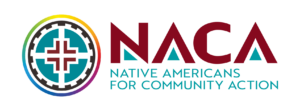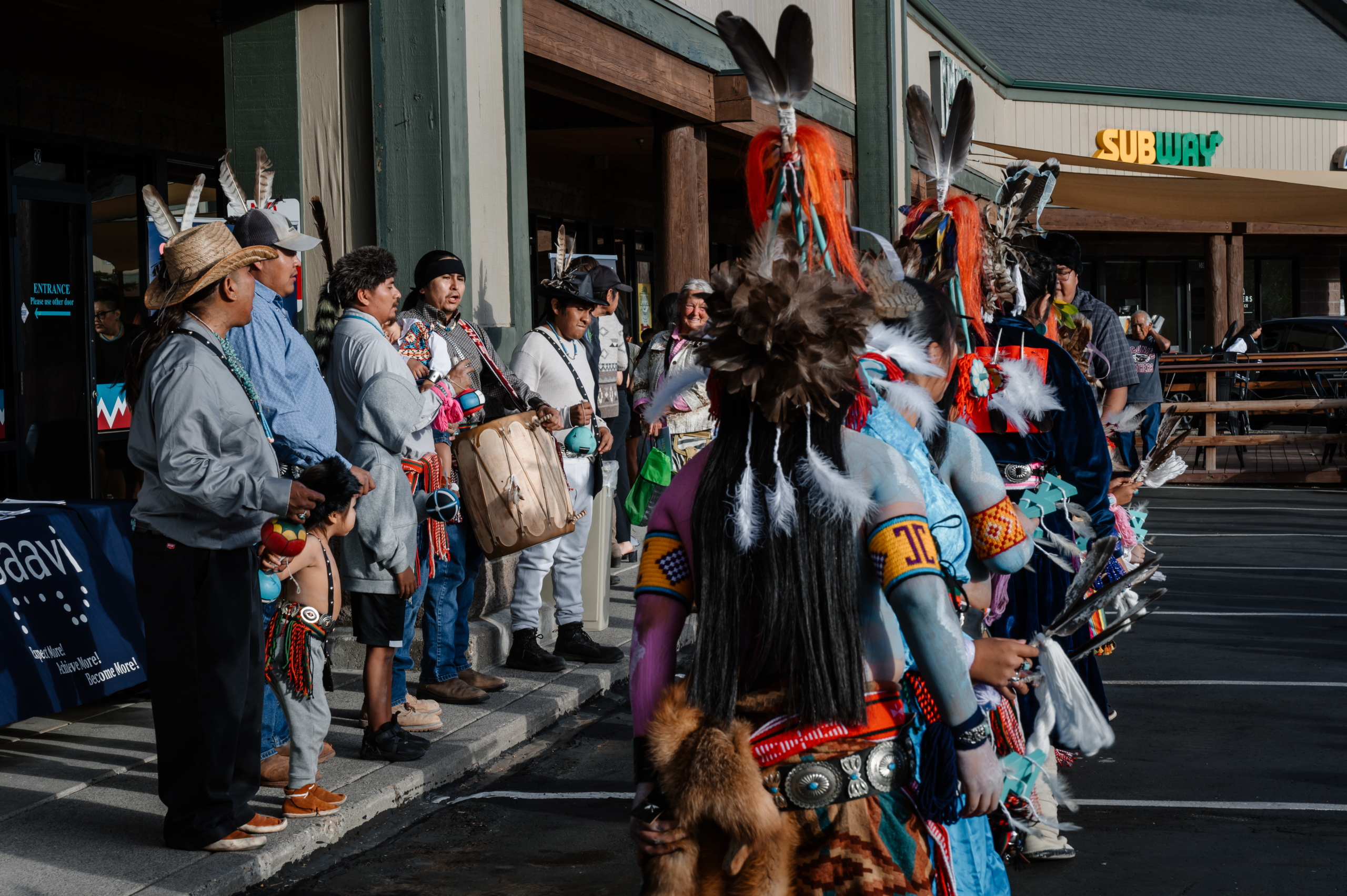Late 1960s
Origins stemmed from concerns in the late 1960s prompting the idea for a place for visiting Native Americans to eat, rest, visit, and receive various health services.
1969-1971
The newly established “Indian Center Organization” began fundraising and built support in the community.
1971
Native Americans for Community Action opened on the site of the current Wheeler Park, as the first volunteer run location.
- It’s purpose was to be a “resting place”, a hospitality center, which hoped to offer a variety of social and health related programs.
- The center received its first funding from IHS (Indian Health Services) to provide health related materials.
1974 – 1979
NACA sponsored the Miss Indian Flagstaff pageant, basketball tournament, a community dinner and began the following programs:
- Comprehensive Employment and Training Act (CETA) Program
- The Youth Education Program
- The Adult Education Program
- Substance Abuse Prevention Program
- Social Services Program
- Grandparent Elders Program
- The Hozho Youth Program
1986 – 1990
NACA expanded their space as well as the Adult Education Program to incorporate more services, programs and community resources.
1991
NACA was designated as the 1st federal Urban Indian Health Center in Northern Arizona on May 13th.
- In 8 months had over 3500 visits
- Assisted clients to increase their self-worth, empowerment, and dignity which established a foundation to increase self-sufficiency through:
- Identification of individual strengths
- Promoting self-pride, awareness and respect
- Establishing realistic goal setting
- Strengthening personal autonomy
- Providing tangible assistance that does not create dependence
2012
The NACA team was staffed by over 50 individuals, with over 70% representing Indigenous cultures, (reported in 2012) and programs included:
- Economic Development – Overlook Program
- Prevention – CVD/Diabetes, Tobacco, Parenting
- Pathways – After School Youth Program
- Wellness Center
- Primary Health Care – Family Health Center
- Diabetes Intervention
- Training – Workforce Investment Act
- Emergency Social Services
- Behavioral Health Services
2014
NACA awarded with a Tribal Youth Suicide Prevention Grant from the Substance Abuse and Mental Health Services Administration (SAMHSA).
- Recognized as “Arizona Outstanding Out-of-School Time” award by the Arizona Center for After school Excellence for innovative out-of-school Pathways programs, providing quality youth development programs for children in Arizona.
2021
NACA celebrates 50 years of service in the Flagstaff and Coconino County communities providing programs and services including:
- Suicide Prevention & Early Intervention
- SAMHSA GLS & the Indian Health Service
- Mental Health
- Substance Abuse
- Pathways Substance Abuse Prevention Program for Youth
- Bordertown Initiative – The Navajo Nation
- Flagstaff proposes an alternate response center to “reduce the number of arrests related to intoxication, mental health and petty crimes” in the Native population.
NACA’S LOGO STORY
1973 – 2021
NACA’s original logo is constructed through much symbolism and reflects the importance of Indigenous culture and experience.
Mr. Harold Joseph, Jr. , M.B.A, prior Executive Director of Native Americans for Community Actions explains the background and imagery involved in the creation of the original NACA logo:

“I was the Executive Director of NACA and among the first of who were hired when NACA was incorporated in 1971. At the time felt I felt very strongly that the organization was ready to proceed forward and will need an Organizational Logo to better indicate its purpose and mission to the public and funding agencies. Doris Honanie was our executive secretary at the time, and Franklin was a NACA board member and a good friend and an Artist.
With this relationship I requested Franklin to develop a design a logo for us. When Franklin came back with the design he had drawn the image as a pretty realistic logo representing the San Francisco Peaks Deer and Eagle on the side of the San Francisco Peaks. I really liked the design which was very artistic work, but I was looking more for something that was more sacred and symbolic of its future of what I thought NACA represented to me so I hand drew the symbol that I thought was symbolic of this. Franklin was with me in my office when I drew the logo sharing with him what these symbols represented.
I then requested Franklin to lay out the symbols that I drew so that we could use it in our letterhead. This symbol is the NACA Symbol today. The symbol represents the Earth and the four Major Directions of the Land/Water on Earth, the Bird Footprint represents the Print of the Turkey which is a very important sacred bird to Hopi and many Native Americans. The animal footprint represents the footprint of the Badger which represents Healers of Life and ones that brought all knowledge of herbal plants to our Indian People. The Human footprint represents moccasin footprint of all human life on this Earth. The fourth footprint represents the Elk/Deer, symbolic of sacred animal representing food/clothing for our people The inner circle around the footprints represent Mother Earth and the lines going outward from the Center of the Circle represents the Center going into Four Major Directions on this Earth.
The circle that encloses the NACA Lettering and the Arrowheads represents the Universe. Once this was designed I had our Executive Secretary Doris take this symbol to the local printer who placed the Symbol as our letterhead. Doris picked the colors of our letterhead which was tan and the lettering and symbol dark brown which I think you still use today.”
– Harold Joseph, Jr. , M.B.A
2021
In 2020 as NACA moved toward their 50th year of servicing the Northern Arizona community, the Board of Directors made the decision to create some improved branding and a new, fresh logo design to reflect the plans and dedication to another 50 years of service in Flagstaff.
Knowing the deep cultural roots and community awareness of this icon, this decision was not taken lightly. The Board of Director’s proceeded with as much NACA staff and local community input as possible including several community and staff meetings, a community-wide survey which eventually lead to a Nationwide request for proposals. Through this search – MABU (Marketing and Business Unlimited), an Indigenous-owned firm in South Dakota – was offered the project.
After several months of work, NACA is pleased to release our new brand design and logo design to the public:

The new logo is inspired by the same medicine wheel incorporation of the old logo, with the integration of a basket weave pattern reflecting Native American culture. The representation of a medical cross in the center brings attention to the fact that NACA is a healthcare organization first and foremost. The center split into four sections brings in the four directions/four elements also of Indigenous tradition.
The colors are pulled from the old logo and add a grounded earth-brown to the color scheme.
The text for the NACA name has been adapted to add three triangles in there to bring a graphical representation to the San Francisco Mountain Sacred Peaks which are extremely important to Native American culture in Northern Arizona.

Native Americans for Community Action, Inc. (NACA) Board of Directors unanimously approved the new logo to support, honor, and acknowledge the Two-Spirit and LGBTQIA+ community.
“It is Native Americans for Community Action’s intent and the intent of its Board of Directors to practice inclusion and recognize our Two-Spirit relatives and other members of the LGBTQIA+ community. With that in mind, the organization accepts one specifically developed logo that represents our alignment with the Two-Spirit and LGBTQIA+ community year-round.”
As a people-focused organization, NACA aspires to raise the physical, mental, emotional, and spiritual wellbeing of all Indigenous and non-Indigenous nations to the highest level. NACA’s mission statement emphasizes advocacy, empowerment, and creating a healthy community based on harmony, respect, and Indigenous values.
NACA strives to ensure that all people including lesbian, gay, bisexual, transgender, and Two-Spirit (2SLGBTQ) Indigenous and non-Indigenous individuals receive equal access to health care services and wellness programs. Our facilities are a place where all visitors and patients can feel valued, appreciated, safe, and seen.
In forging this path of inclusive excellence, we ask this logo to represent respect, support, honor, and acceptance.






